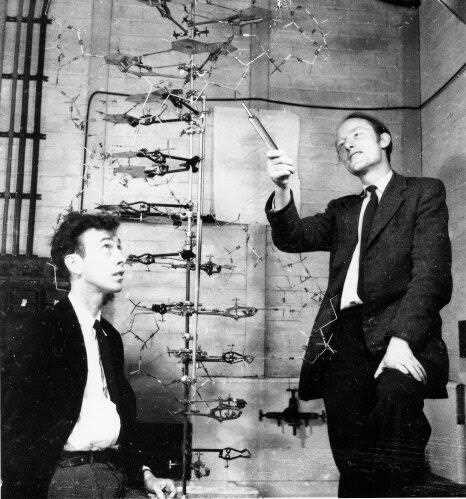The discovery of the double helix structure of DNA (deoxyribonucleic acid) is one of the most significant scientific breakthroughs of the 20th century. James Watson and Francis Crick proposed the structure for the first time in 1953. However, the discovery of the structure of DNA was the result of many years of research and contributions from several scientists.

One of the key figures in the discovery of the structure of DNA was Rosalind Franklin, an English chemist and X-ray crystallographer. In 1952, Franklin and her colleague Maurice Wilkins obtained an X-ray diffraction image of DNA that revealed the helical structure of the molecule. This image, known as Photograph 51, provided crucial evidence that allowed Watson and Crick to propose their double helix model.
While Franklin's work was critical to the discovery of the structure of DNA, she was not credited for her contributions during her lifetime. Franklin died in 1958, four years before Watson, Crick, and Wilkins were awarded the Nobel Prize in Physiology or Medicine for their work on DNA.
Another key figure in the discovery of the structure of DNA was Linus Pauling, an American chemist and physicist. Pauling proposed a triple helix structure for DNA in 1953, but his model was ultimately proven incorrect. Despite this, Pauling's work on DNA and other molecules was instrumental in the development of the field of molecular biology.
Other scientists who made important contributions to the discovery of the structure of DNA include Erwin Chargaff, an Austrian biochemist who discovered the base pairing rules that govern the structure of DNA, and Maurice Wilkins, a New Zealand-born biophysicist who worked alongside Rosalind Franklin at King's College in London.
In summary, while James Watson and Francis Crick are often credited with the discovery of the double helix structure of DNA, the discovery was the result of many years of research and contributions from several scientists. Rosalind Franklin's work on X-ray crystallography was critical to the discovery, while Linus Pauling's work on the chemical properties of molecules provided important insights into the structure of DNA.
Also Read: In 2023, the Space Crystals Project hopes to place human DNA on the moon.